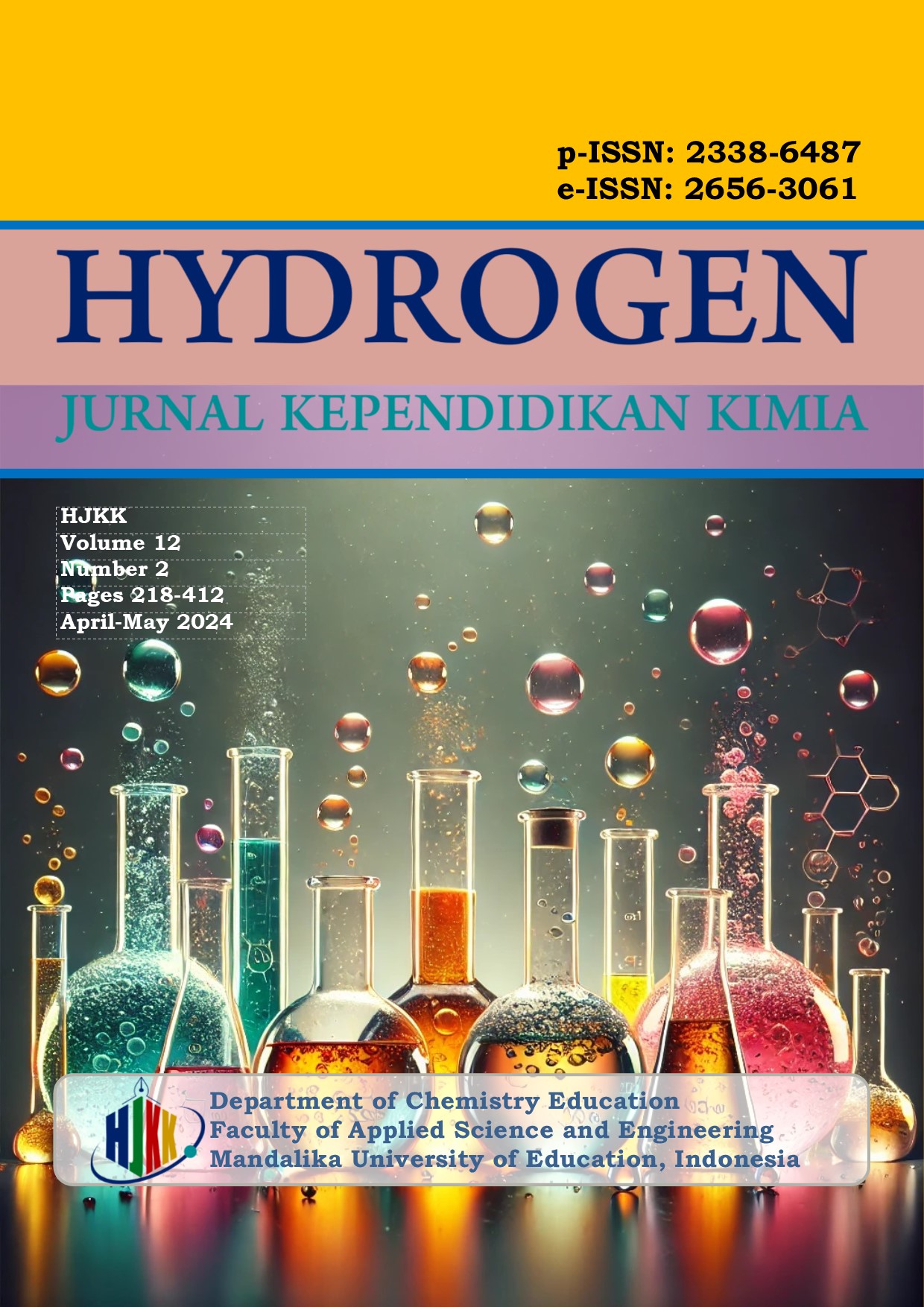Documentary Video Media Development on Food Additives
DOI:
https://doi.org/10.33394/hjkk.v12i2.10846Keywords:
documentary video, media development, food additivesAbstract
In this era, technology is advancing and developing rapidly. Almost every minute or even second we are in direct contact with technology. In today's world of education, it is also inseparable from the role of technology. Students who on average have good technological literacy tend to get bored more quickly when learning runs conventionally. Regarding the function of learning media, it can be emphasized as follows: as a tool to streamline learning, accelerate the teaching and learning process, and improve the quality of the teaching and learning process. The purpose of this research is to produce a documentary video about food additives that is expected to be utilized for ease of learning. The method used in this research is research and development developed by Borg and Gall. This documentary video media development procedure goes through stages, namely: (1) Research and information gathering, (2) Product development planning, and (3) Initial Product Development. Data or information collection techniques using literature studies and field studies. Stages of video development by creating a storyboard using a video editor application. The next stage of learning videos is validated or evaluated by experts. This Documentary Video validation analysis uses descriptive methods through questionnaires. The results of the validation of this Documentary Video obtained an average score of 3.5 by entering the valid category. It can be concluded that this Video Documentary is suitable for use and can be followed up by looking at student responses.
References
Brata, V. B. (2007). Videografi dan Sinematografi Praktis. Semarang: PT. Elex Media Komputindo.
Daryanto. (2011). Media Pembelajaran (Perannya Sangat Penting dalam Mencapai Tujuan Pembelajaran). Yogyakarta : Gava Media.
Emzir. (2015). Metodologi Penelitian Pendidikan Kuantitatif & Kualitatif. Jakarta : Rajawali Pers.
Fatmawati, E., Karmin., & Sulistiyawati, R. S. (2018) Pengaruh Media Pembelajaran Berbasis Video Terhadap Hasil Belajar Siswa. Jurnal Pendidikan Volume 12.
Javandalasta, P. (2011). Lima Hari Mahir Bikin Film. Surabaya : MUMTAZ Media.
Kamilati, N. (2006). Mengenal Kimia 2 : SMP/MTs KELAS VIII. Jakarta : Yudisthira.
Krisno, A., Mucharam, T. T., & Mampuono. (2008). Ilmu Pengetahuan Alam: SMP/MTs Kelas VIII. Jakarta : Pusat Perbukuan Departemen Pendidikan Nasional.
Kustandi, C. (2013). Media Pembelajaran Manual dan Digital. Bogor : Ghalia Indonesia.
Munadi, Y. (2008). Media Pembelajaran Sebuah Pendekatan Baru. Jakarta : Gaung Persada Perss.
Pribadi, B. A. (2017). Media dan Teknologi Dalam Pembelajaran (Edisi Pertama). Jakarta: Kencana.
Sadiman, A. S. (dkk). (2009). Media Pendidikan Pengertian, Pengembangan dan Pemanfaatannya. Jakarta: RajaGrafindo Persada.
Santyasa, I. W. (2007). Landasan Konseptual Media Pembelajaran. Banjar Angkan: Universitas Pendidikan Ganesha.
Suci, E. S. (2009). Gambaran Perilaku Jajan Murid Sekolah Dasar di Jakarta. Psikobuana, 29-38.
Sudjana, N., & Rivai, A. (2011). Media Pengajaran. Bandung: Sinar Baru Algensindo.
Sukmadinata, N. S. (2010). Metode Penelitian Pendidikan. Bandung: PT Remaja Rosdakarya.
Supriatna, D. (2009). Pengenalan Media Pembelajaran. Jakarta: PPPPTK dan PLB.
Suryani, N., Setiawan, A., & Putria, A. (2018). Media Pembelajaran Inovatif dan Pengembangannya. Bandung : PT Remaja Rosdakarya.
Tim Abdi Guru. (2012). IPA Terpadu untuk SMP/MTs KELAS VIII. Jakarta : Erlangga.
Titik, N., & Wibowo, A. W. (2014). Pentingnya Memilih Jajanan Sehat Demi Kesehatan Anak. Jurnal Inovasi dan Kewirausahaan, 192-196.
Yamasari, Y. (2010). Pengembangan Media Pembelajaran Matematika Berbasis ICT yang Berkualitas.Seminar Nasional Pascasarjana X-ITS.
Downloads
Published
How to Cite
Issue
Section
Citation Check
License
License and Publishing Agreement
In submitting the manuscript to the journal, the authors certify that:
- They are authorized by their co-authors to enter into these arrangements.
- The work described has not been formally published before, except in the form of an abstract or as part of a published lecture, review, thesis, or overlay journal.
- That it is not under consideration for publication elsewhere,
- That its publication has been approved by all the author(s) and by the responsible authorities – tacitly or explicitly – of the institutes where the work has been carried out.
- They secure the right to reproduce any material that has already been published or copyrighted elsewhere.
- They agree to the following license and publishing agreement.
Copyright
Authors who publish with Hydrogen: Jurnal Kependidikan Kimia agree to the following terms:
- Authors retain copyright and grant the journal right of first publication with the work simultaneously licensed under a Creative Commons Attribution License (CC BY-SA 4.0) that allows others to share the work with an acknowledgment of the work's authorship and initial publication in this journal.Â
- Authors are able to enter into separate, additional contractual arrangements for the non-exclusive distribution of the journal's published version of the work (e.g., post it to an institutional repository or publish it in a book), with an acknowledgment of its initial publication in this journal.
- Authors are permitted and encouraged to post their work online (e.g., in institutional repositories or on their website) prior to and during the submission process, as it can lead to productive exchanges, as well as earlier and greater citation of published work.
Licensing for Data Publication
Hydrogen: Jurnal Kependidikan Kimia uses a variety of waivers and licenses, that are specifically designed for and appropriate for the treatment of data: Open Data Commons Attribution License, http://www.opendatacommons.org/licenses/by/1.0/ (default) Other data publishing licenses may be allowed as exceptions (subject to approval by the editor on a case-by-case basis) and should be justified with a written statement from the author, which will be published with the article.







